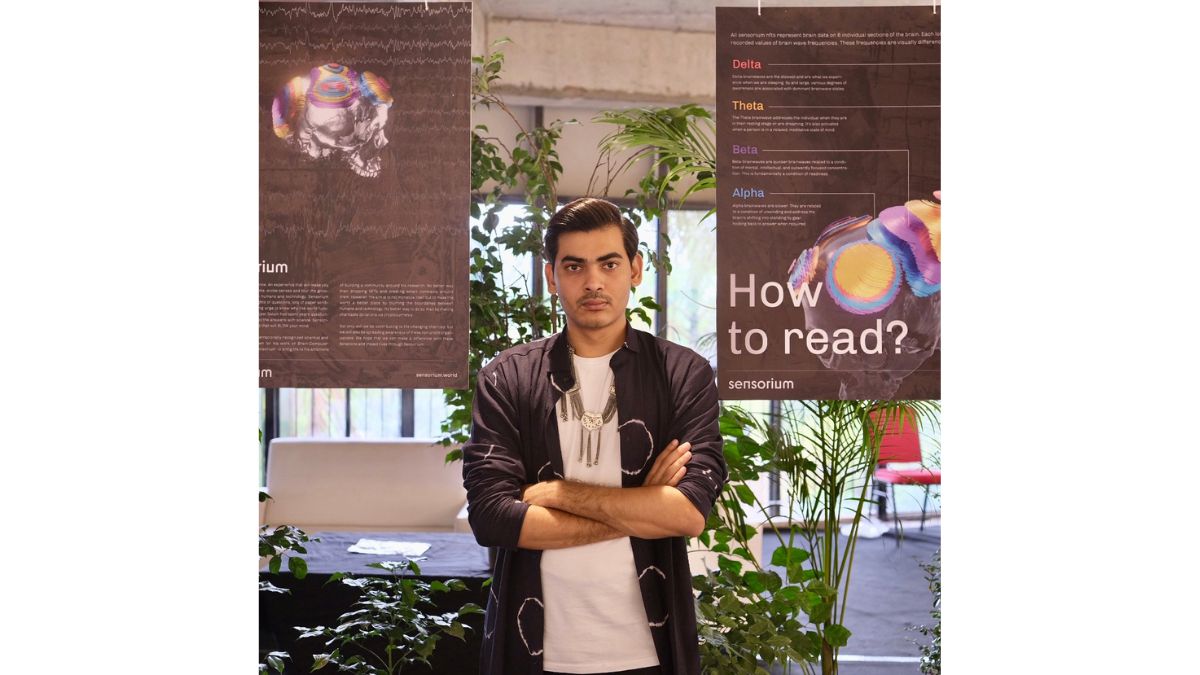The intersection of neuroscience and digital art through NFTs

By Abhijeet Satani
NFT stands for Non-Fungible Token, a unique digital asset stored on a blockchain, which is a decentralized digital ledger that records transactions in a secure and transparent manner. Unlike other cryptocurrencies such as Bitcoin, NFTs are not fungible or divisible, meaning that each NFT is unique and cannot be replicated or divided into smaller units.
NFTs can be used to represent a wide range of digital assets, including art, music, videos and other forms of creative expression. When an NFT is created, it is assigned a unique code that is stored on the blockchain, providing a secure and verifiable record of ownership. This means that NFTs can be bought and sold like other assets, with the value of each NFT determined by factors such as rarity, historical significance and demand.
The intersection of neuroscience and digital art through non-fungible tokens, or NFTs, represents a fascinating frontier in the world of creative expression. By harnessing the power of new technologies and our growing understanding of the human brain, NFT-based digital art can create immersive and transformative experiences that were previously impossible.
At its core, neuroscience seeks to understand the complex functions of the human brain, from the firing of individual neurons to the formation of complex thoughts and emotions. Furthermore, digital art is a rapidly growing medium that encompasses a wide range of creative expressions, from traditional art forms such as painting and sculpture to interactive and immersive installations that contain sound, video and other elements.
By using NFTs, creators of digital art can add unique qualities to their work that were previously impossible with traditional art forms. For example, NFTs can be used to represent ownership of digital artwork, allowing creators to monetize their work in ways that were not previously viable. At the same time, NFTs can also be used to ensure the authenticity and uniqueness of digital art, and help prevent unauthorized copying or distribution.
In the context of neuroscience and digital art, NFTs can be used to create transformative experiences that directly engage the human brain. For example, a digital art installation may incorporate brain-computer interfaces that measure the viewer’s brain activity and respond in real time, creating an immersive and interactive experience that adapts to the viewer’s emotional state and cognitive processes.
NFTs can also be used to represent unique digital assets that are directly linked to the human brain. For example, a brain scan or other neurological data can be used to create a unique digital asset that represents a specific moment in a person’s cognitive or emotional experience. This can create new opportunities for artistic expression, as well as new avenues for research and exploration in neuroscience.
A potential application of this technology is in mental health. By using NFT-based digital art to create immersive and interactive experiences that engage people
brain, it may be possible to develop new therapies or treatments for conditions such as anxiety, depression and PTSD. For example, an NFT-based installation that includes biofeedback and other interactive elements can help patients learn to regulate their emotions and improve their mental well-being.
It reimagines the digital ownership of biometric data as well as brain simulation, psychological expression times and brainwave fingerprints associated with lasting thoughts. Technology fascinates people, but they are also deeply concerned about its potential impact.
There are also potential challenges and limitations to this technology. There are ethical concerns surrounding the use of brain data and the potential for exploitation or abuse. In addition, there is a risk that NFT-based digital art may become overly commercialised, with creators prioritizing marketability over artistic expression.
Despite these challenges, the intersection of neuroscience and digital art through NFTs represents a powerful and exciting opportunity to create new forms of creative expression that directly involve the human brain. As the technology continues to evolve, it will be interesting to see how creators and researchers alike explore the possibilities of this new field.
The author is the founder, Sensorium
Follow us on TwitterFacebook, LinkedIn
























![Bitcoins [BTC] improvement in the issue as the anniversary of the conflict between Russia and Ukraine approaches Bitcoins [BTC] improvement in the issue as the anniversary of the conflict between Russia and Ukraine approaches](https://www.cryptoproductivity.org/wp-content/uploads/2023/02/btc-michael-1000x600-120x120.jpg)